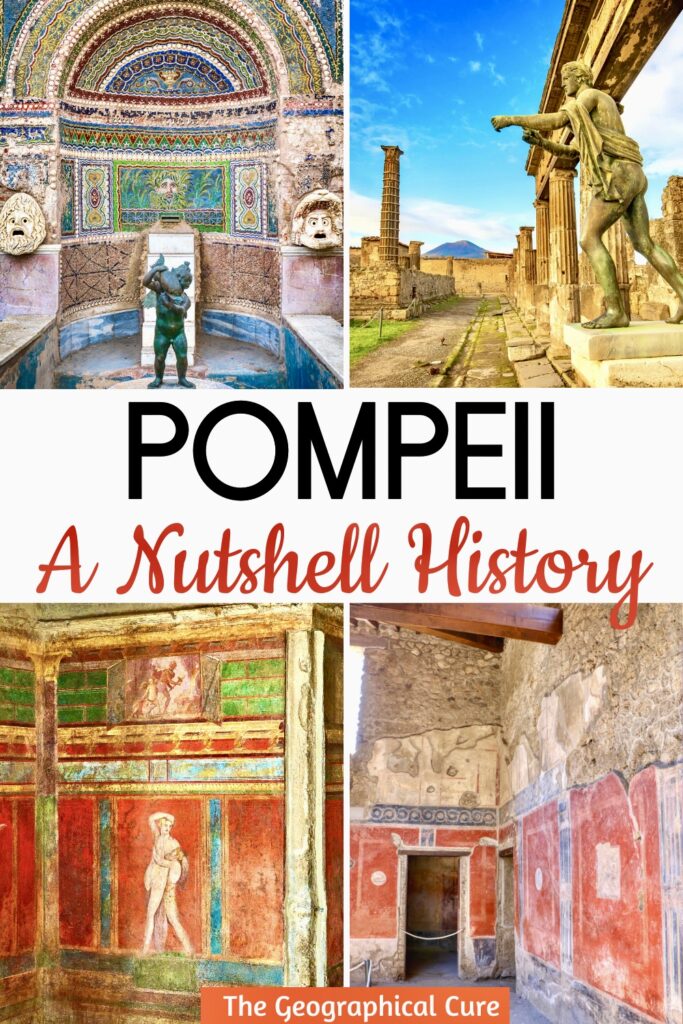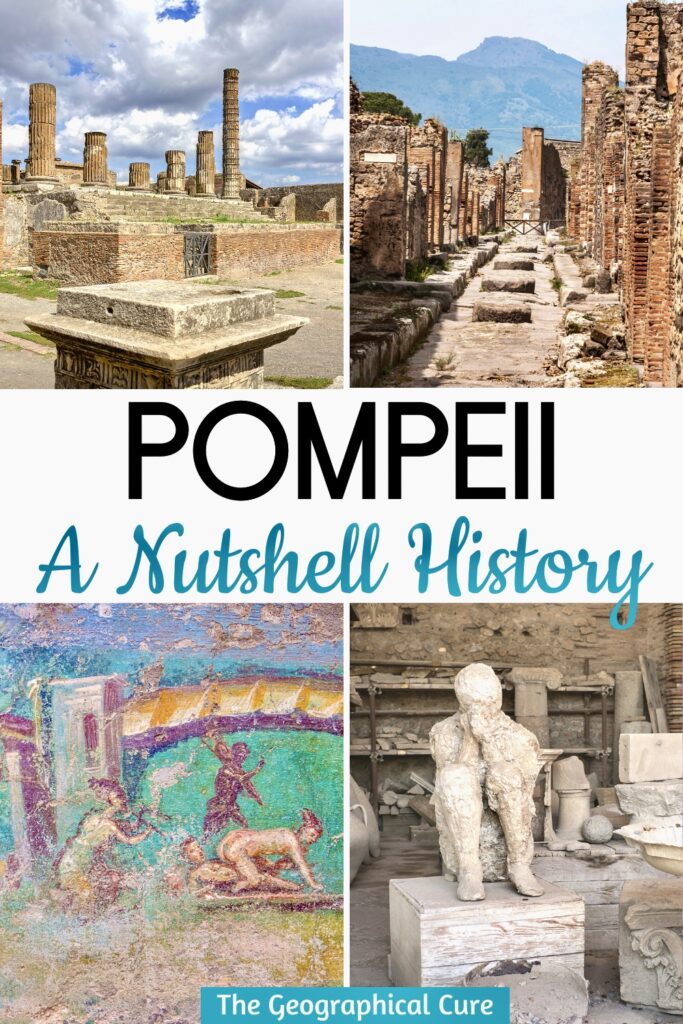Pompeii, a UNESCO-listed site near Naples, was once a bustling ancient Roman city.
However, in 79 A.D., it met a tragic fate when Mount Vesuvius erupted, burying it under superheated ash and debris. Rediscovered centuries later, Pompeii provides a special window into the daily life, art, and architecture of ancient Rome.
But what is the history of Pompeii?
Pompeii began life as an Osci settlement. It was part of a network of coastal villages belonging to this indigenous Italian tribe. A century later, Pompeii became a Greek and Etruscan trading post.
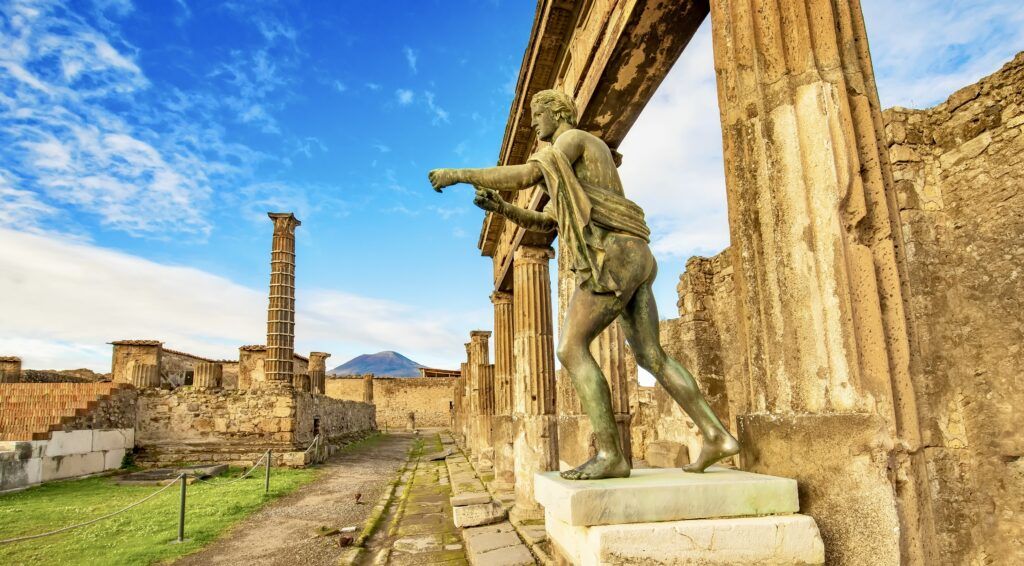
Control then fell to the Samites for two centuries until the Romans took over for good in 290 B.C.
DNA reveals that Pompeiians were a multicultural population. They had Roman blood, but also Sardinian and Mediterranean ethnicities.
The town wasn’t particularly flashy. It was a mid-size town that prospered quietly, with a population of between 20,000 to 35,000. Still, Pompeii’s extravagant villas show that the city was home to some wealthy Romans.
Pompeii also had a thriving agricultural and industrial economy.
The fertile volcanic soil in the region was highly conducive to farming. The city was known for its production of products such as grains, grapes, olives, and vegetables.
Wine production was a significant industry as well. Pompeiian wine was exported to other parts of the Roman Empire.
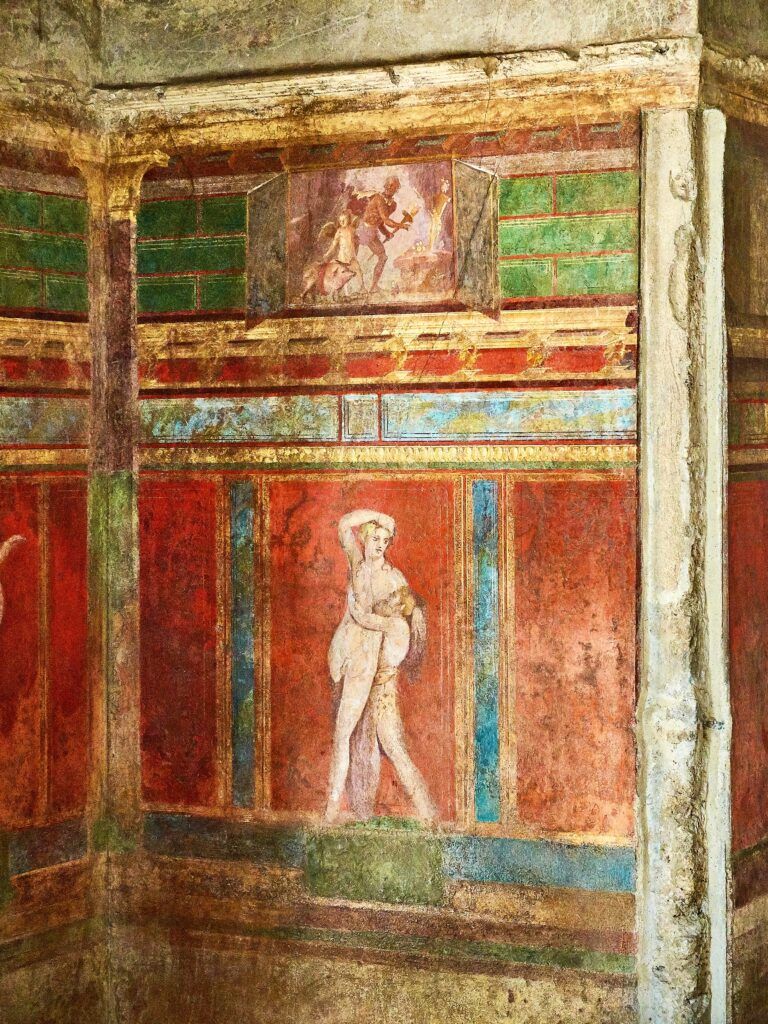
Archaeologists have also discovered over 200 craft workshops within the city — tanning, textile production, and baking.
When Mount Vesuvius exploded after 300 years of dormancy, pumice and ash buried the town entirely.
The explosion killed approximately 2,000 people in an instant, with some citizens able to flee. At the site, you can see the preserved plaster casts of the victims, who were horrifically frozen in time by the volcanic ash.
The exact date of the eruption of Mount Vesuvius in 79 AD, however, remains uncertain.
According to Pliny the Younger, a Roman writer who witnessed the scene, the eruption occurred on August 24. However, researchers have raised doubts about this date.
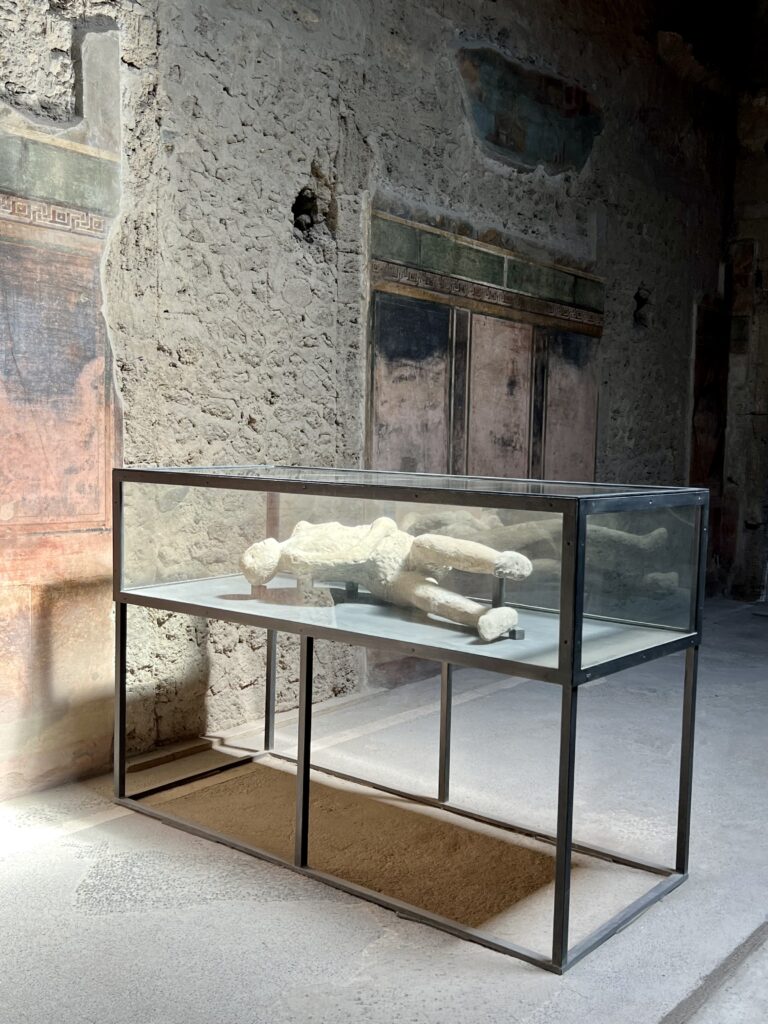
Archaeological evidence indicates the presence of fruit and the completion of the wine harvest. Corpses in cool weather clothing have also been found. All these factors point to an autumnal eruption.
In addition, Italian archaeologists recently uncovered a charcoal inscription on a wall in the House of the Garden with an October date.
This discovery lends further credibility to the theory that the eruption most likely took place in late October.
Whatever the date, the irony is that, without Vesuvius, Pompeii would have been just another town lost to time. Instead, it was posterity’s fortune, bequeathing to the world the best preserved ruins from Ancient Rome.
Unfortunately, they were so well hidden that the ruins weren’t discovered for 1500 years.
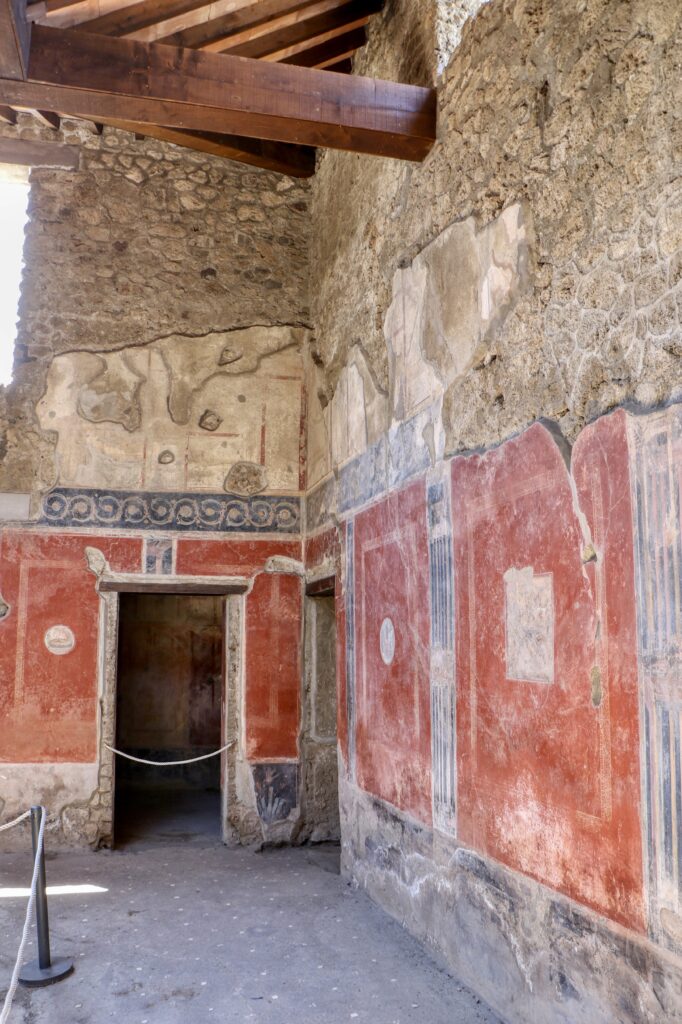
It was not until 1748 that the first of several haphazard excavations took place under the auspices of Charles of Bourbon. Under Giuseppe Fiorelli, one third of the site was uncovered by 1860.
Unfortunately, with the excavations came looting. Many of its treasures — jewelry, statues, mosaics — were stolen. Still, much remains for archaeologists and admirers alike.
But maintaining Pompeii — especially in light of its millions of devoted visitors — is challenging. The site has suffered from erosion, weathering, inadequate maintenance, poor preservation, and mass tourism. By 2000, Pompeii was starting to fall apart.
In 2001, UNESCO threatened to place the site on its endangered list. In 2012, with significant EU funding, Pompeii launched an extensive conservation program called the Great Pompeii Project.
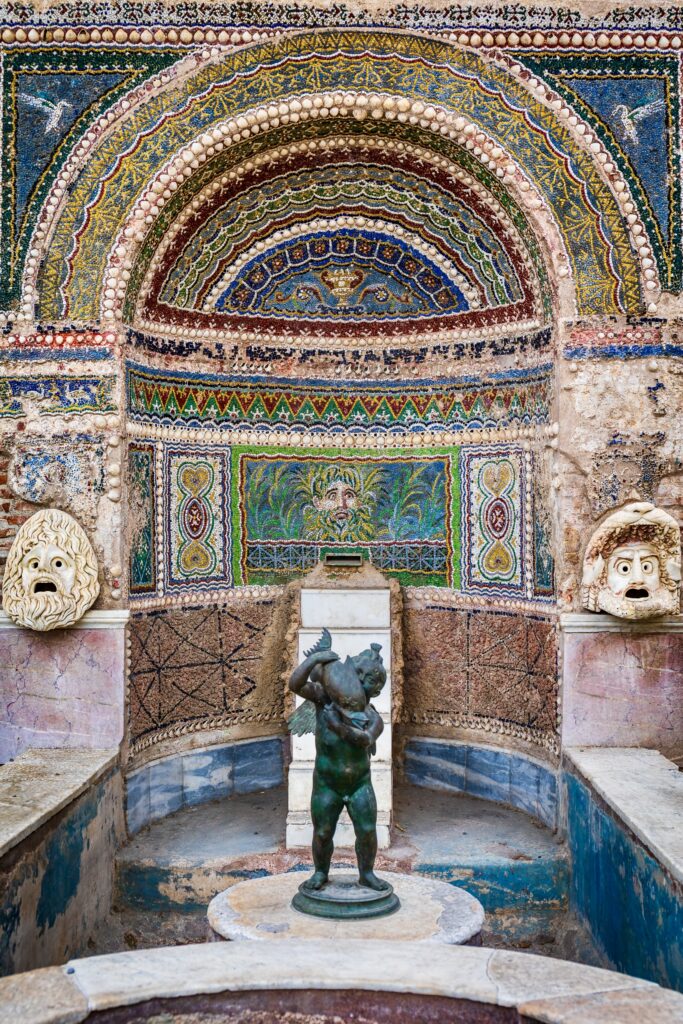
The primary purpose of the program was to conserve Pompeii and keep it safe from further harm.
Yet, preservation has yielded tremendous discoveries in the last few years — vibrant frescos in the House of the Vettii, a Leda and the Swan fresco, the gorgeous entrance hall of the house of the Dolphins, the Room of the Slaves, and a new fast food snack area with a frescoed counter.
Pompeii is still being excavated. It’s the gift that keeps on giving and has been a boon for archaeologists. In June 2023, archaeologists discovered a rare painting of a flatbread pizza in Region IX. In March 2024, a new frescos was uncovered in the House of Leda.
On my last visit, my guide also told me that the new director of the site was formerly at Paestum. He wasted no time in getting excavations started in Region IX.
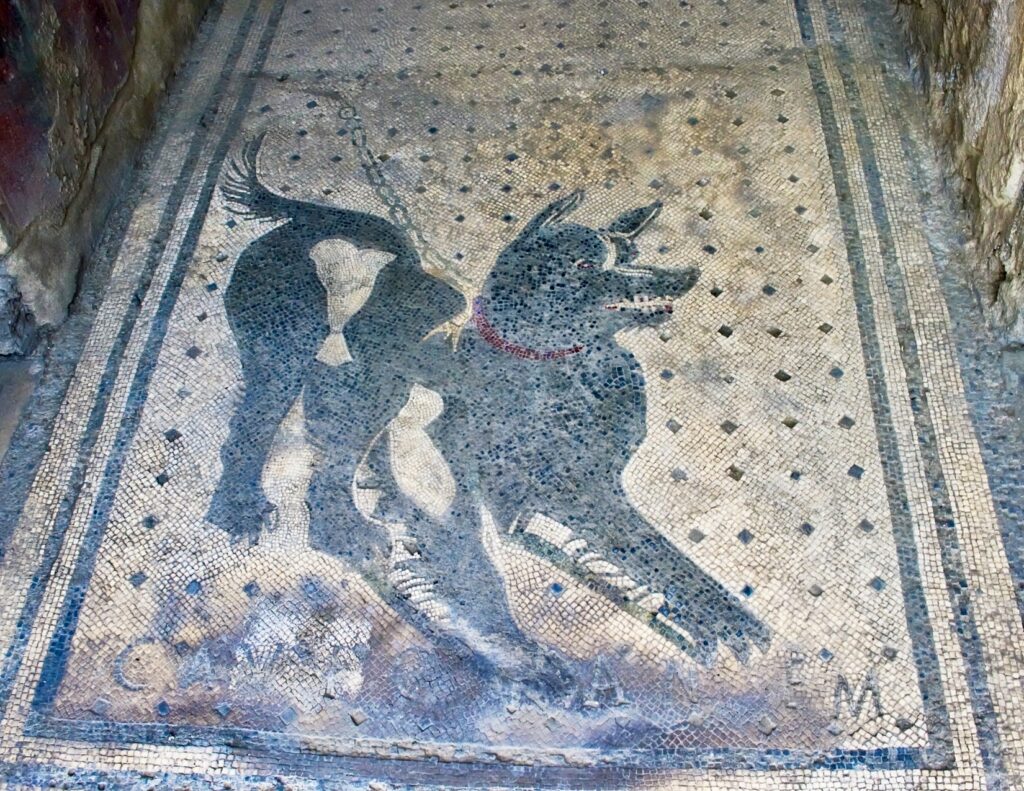
For more information on Pompeii, check out my complete guide to Pompeii, with everything to see at the site.
If you are visiting Naples, you can also visit the Naples National Archaeological Museum where most of the artifacts from Pompeii are preserved and on display.
I hope you’ve enjoyed my nutshell history of Pompeii. You may find these other southern Italy travel guides useful:
- 10 Days in Southern Italy Itinerary
- One Week In Puglia Itinerary
- Places To Visit in Puglia
- One Week Amalfi Coast Itinerary
- One Week Rome & Amalfi Itinerary
- 5 Days on the Amalfi Coast
- One Day In Naples Itinerary
- 3 Days In Naples Itinerary
- 2 Days in Matera Itinerary
- 2 Days In Ravello itinerary
- 2 Days In Capri itinerary
If you need a history of Pompeii, pin it for later.

